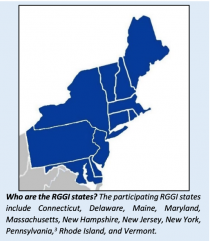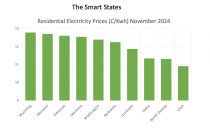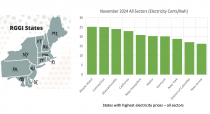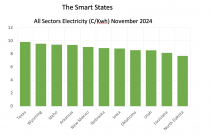Joseph D’Aleo ICECAP
First the softsell
Greenhouse Gas Initiative
The Regional Greenhouse Gas Initiative (RGGI) is a cooperative effort among eleven Eastern states to reduce carbon dioxide (CO2) emissions from power plants within each participating state.Together, the participating states have established a regional cap on CO2 emissions, which sets a limit on the emissions from regulated power plants within the RGGI states.
When you list the states with the highest electricity prices for the residential sector, the list has the RGGI states and no surprise California.
The lowest prices were in statesnd that have common sense energy policies.
The same holds for all energy user sectors - first highest prices and then lowest prices.
The RGGI Fact sheet tries to sell the benefits to the state and users.
Regional Greenhouse Gas Initiative
The Regional Greenhouse Gas Initiative (RGGI) is a cooperative effort among eleven Eastern states to reduce carbon dioxide (CO2) emissions from power plants within each participating state. Together, the participating states have established a regional cap on CO2 emissions, which sets a limit on the emissions from regulated power plants within the RGGI states. Over time, the regional cap declines, so that CO2 emissions decrease in a planned and predictable way.
Since 2005, the RGGI 10 states have reduced annual power sector emissions 50%, which is almost 50% faster than the nation as a whole, and have so far raised over $8.6 billion to invest into local communities. How Does RGGI Work? Within the RGGI states, certain power plants must acquire one RGGI CO2 allowance for every short ton of CO2 they emit. The RGGI states distribute these allowances at quarterly auctions, where they can be purchased by power plants and other entities.
Some states hold a limited number of allowances in set-aside accounts to sell at a fixed price or otherwise distribute outside of the auction process. Once an allowance is distributed, it can be held and traded, which creates a secondary market for allowances.







